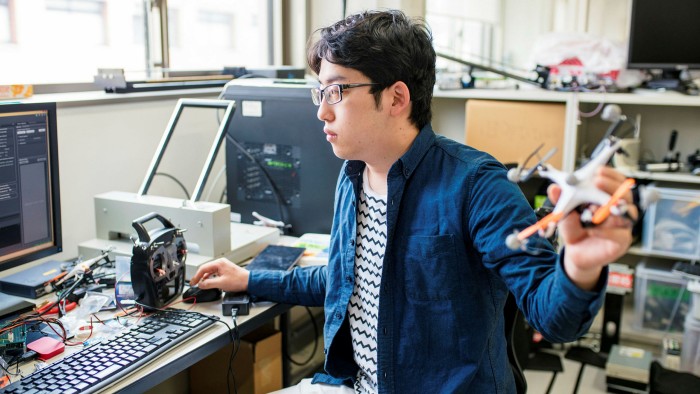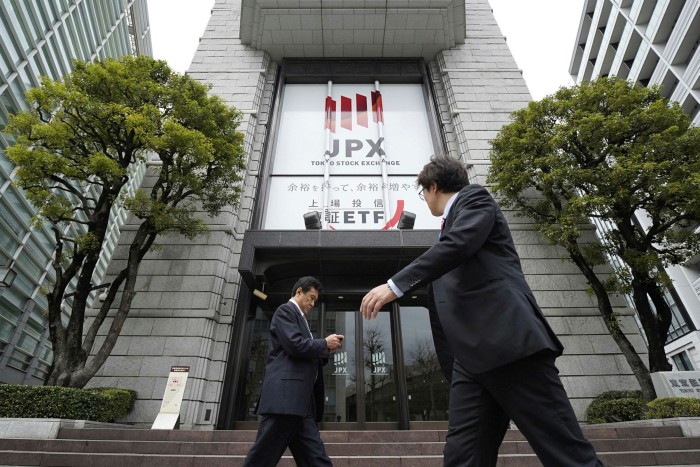Japan launches university fund to spur innovation

Simply sign up to the Japanese business & finance myFT Digest -- delivered directly to your inbox.
For almost three decades since the collapse of its 1980s economic “bubble”, Japan has fretted — at both a public- and private-sector level — about its declining powers of innovation. The urgency of the warnings, though, did not often appear to translate into direct action.
But that may be changing. This spring, Japan formally launched its first national endowment fund for universities — a ¥10tn ($82bn) behemoth that is the largest of its type in the world and, according to those now charged with running it, a clear recognition that the country urgently needs to take innovative competitiveness more seriously.
The creation of the fund, along with plans to create a “University of Excellence” is one of a number of efforts built around the idea that Japan desperately needs to create a financial, structural and regulatory environment conducive to innovation. And, in an argument repeated in different branches of the government, this should be directed towards solving the problems that Japan, as the world’s fastest-ageing society, faces.
The fund is part of a two-pronged approach by Japan that involves both support for the start-ups and more focused state support for the basic research that underpins an innovative country. It will aim to provide financial support for research through the annual returns on its investment.
Masakazu Kita, chief investment officer of the new fund, says the question will be how the universities respond to the support provided.
“I would like to see how well the university balances the three pillars of business growth, advanced research, and strengthened governance. People often worry that research will be neglected if too much focus is placed on business,” he says. “The purpose of the fund is to build research universities that can compete in the world.”
In April, JPX, the company behind the Tokyo Stock Exchange, introduced the biggest reorganisation of Japanese equity markets in many decades — a streamlining of the exchange which, among other changes aimed at improving Tokyo’s global image for investors, makes it easier for risk capital to identify and bet on Japanese innovation.

These developments follow repeated concerns from technology leaders over the long-term effects of demographic decline, the so-called “lost” economic decades, and other structural obstacles to competitiveness — and how this has all affected Japanese innovation.
Among the voices were Shuji Nakamura, inventor of the blue LED, who famously left Japan for the US in frustration at the way in which corporate Japan failed to reward inventors. Japanese research departments, he once told the FT, were centres of “brainwashing” that convinced inventors they did not deserve greater financial recognition of their work.
But the counter to this was an industrial base populated by companies such as Nidec and Fanuc that remained capable of attracting the best people to generate globally competitive products, and an education system still producing competitive innovators.
When it came to other metrics of innovation, Japan was also able to point to the many decades where it had stood either at, or near the top, of the world leaderboard in annual patent filings — even as China and South Korea soared ever higher.
Through the first year of the pandemic, Japan maintained its position as the world’s third biggest filer, with 288,472 applications. When investor attention shifted to other measurements, such as venture capital activity and the number of successful start-ups, Japan was able to argue that its business model tended to keep these things in-house at major corporations — and therefore less visible.
More recently, however, confidence in that argument has fallen sharply. Innovation worldwide is increasingly focused on areas outside Japan’s traditional expertise, which has jolted the country into action. These include artificial intelligence, financial technology, biotechnology and, in particular, the software-driven innovation where both China and the US have taken a huge lead.
Even as investment in Japanese start-ups rose from just under $2bn in 2015 to around three times that in 2019, Japan has produced notably fewer “unicorn”, or $1bn, start-ups than the US.
In light of these changes to the competitive environment, a highly influential report, published in March 2020 by the Japan External Trade Organization (Jetro), called for ever more concerted efforts to create innovation and accelerate product development, in order to improve the competitiveness of Japanese companies.
More stories from this report
FT ranking: Asia-Pacific High-Growth Companies 2022
Asia-Pacific start-ups seize home growth amid travel shutdowns
‘I knew the future was ecommerce’: Great Deals CEO on topping FT ranking
Bangalore keeps its crown as India’s high-growth tech hub
South Korean webtoon platform’s pitch for international fans
“It will be difficult to achieve this if companies simply continue to rely on their own business resources in the form of technologies and human resources, as well as the traditional business model,” the report warned.
Japanese companies will have to make more proactive use of external resources, it argued, as the traditional environment, in which businesses evolved via a pyramid of innovation throughout the supply chain, is being buffeted by change.
The Jetro paper pointed to a number of innovative projects being planned, but one of the biggest practical changes was one to the tax system, to encourage Japanese companies that have traditionally hoarded cash to divert that into start-ups.
The new system, which came into force in the fiscal year that ended in March 2021, offers companies and corporate venture capital a sizeable tax deduction on investments into unlisted venture companies less than 10 years old.
Comments